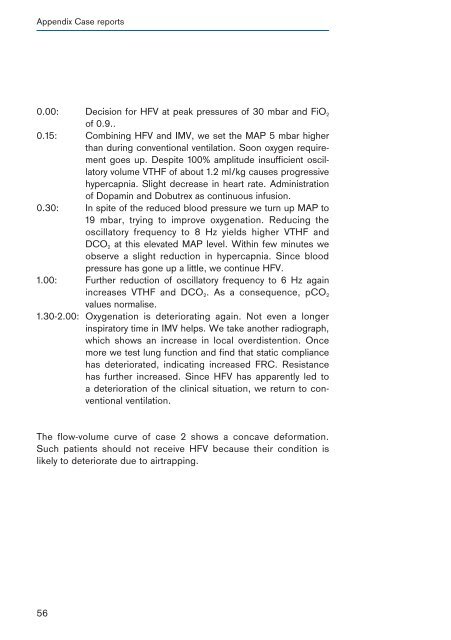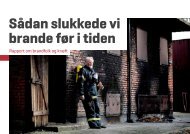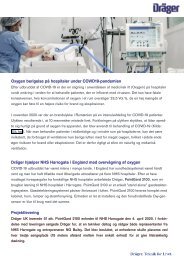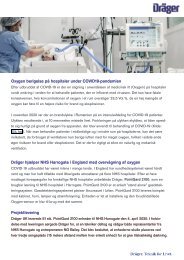High-Frequency Ventilation- Basics and Practical Applications
Create successful ePaper yourself
Turn your PDF publications into a flip-book with our unique Google optimized e-Paper software.
Appendix Case reports<br />
0.00: Decision for HFV at peak pressures of 30 mbar <strong>and</strong> FiO 2<br />
of 0.9..<br />
0.15: Combining HFV <strong>and</strong> IMV, we set the MAP 5 mbar higher<br />
than during conventional ventilation. Soon oxygen requirement<br />
goes up. Despite 100% amplitude insufficient oscillatory<br />
volume VTHF of about 1.2 ml/kg causes progressive<br />
hypercapnia. Slight decrease in heart rate. Administration<br />
of Dopamin <strong>and</strong> Dobutrex as continuous infusion.<br />
0.30: In spite of the reduced blood pressure we turn up MAP to<br />
19 mbar, trying to improve oxygenation. Reducing the<br />
oscillatory frequency to 8 Hz yields higher VTHF <strong>and</strong><br />
DCO 2 at this elevated MAP level. Within few minutes we<br />
observe a slight reduction in hypercapnia. Since blood<br />
pressure has gone up a little, we continue HFV.<br />
1.00: Further reduction of oscillatory frequency to 6 Hz again<br />
increases VTHF <strong>and</strong> DCO 2 . As a consequence, pCO 2<br />
values normalise.<br />
1.30-2.00: Oxygenation is deteriorating again. Not even a longer<br />
inspiratory time in IMV helps. We take another radiograph,<br />
which shows an increase in local over distention. Once<br />
more we test lung function <strong>and</strong> find that static compliance<br />
has deteriorated, indicating increased FRC. Resistance<br />
has further increased. Since HFV has apparently led to<br />
a deterioration of the clinical situation, we return to conventional<br />
ventilation.<br />
The flow-volume curve of case 2 shows a concave deformation.<br />
Such patients should not receive HFV because their condition is<br />
likely to deteriorate due to airtrapping.<br />
56


















